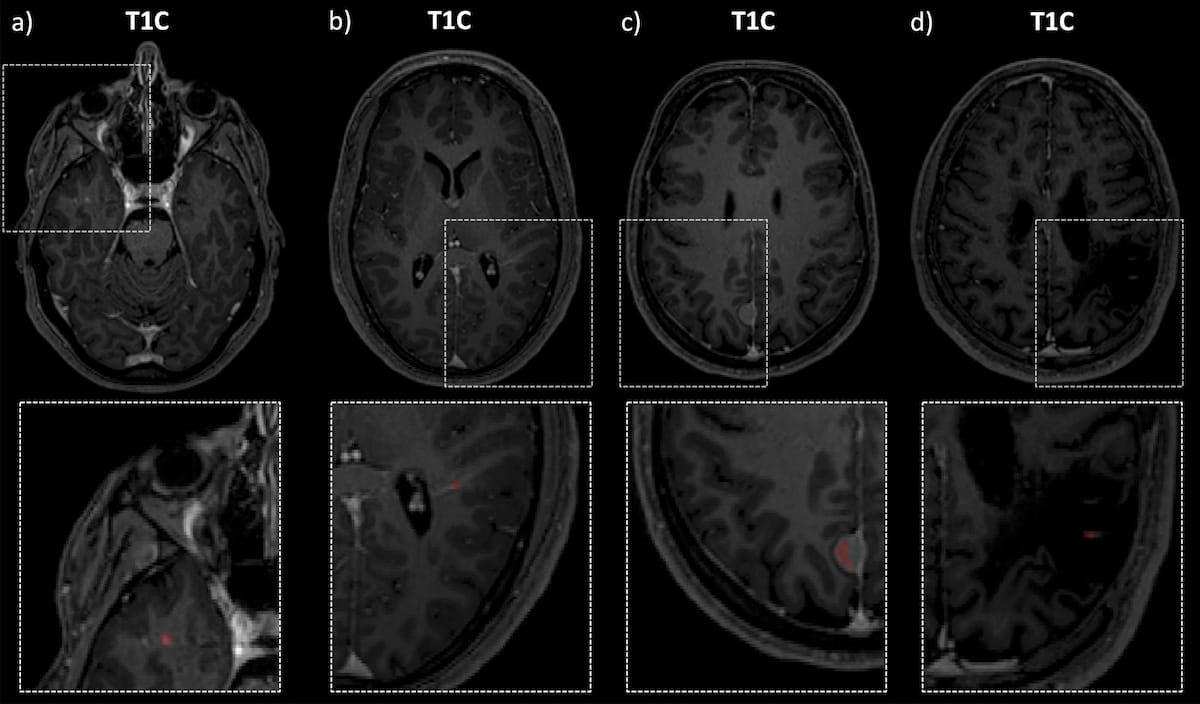Can AI Bolster MRI Lesion Detection and Segmentation in Patients with Multiple Sclerosis?
An artificial intelligence model, trained on MRI and FLAIR imaging from over 900 patients with multiple sclerosis, demonstrated a 96 percent accuracy rate and 99 percent specificity rate for contrast-enhancing lesions in this patient population.
While contrast-enhancing (CE) lesions on brain magnetic resonance imaging (MRI) play a key role in the management of patients with multiple sclerosis (MS), significant variation in the morphology of CE lesions and the time-consuming nature of manual segmentation of these lesions can lead to errors by radiologists. However, an emerging convolutional neural network (CNN) may facilitate optimal diagnosis and segmentation of lesions in this patient population.
In a new retrospective study, recently published by Insights into Imaging, researchers examined the effectiveness of a CNN model for assessing post-contrast T1-weighted MRI and fluid-attenuated inversion recovery (FLAIR) imaging in a total of 359 patients with MS mean age of 38.2). External training of the CNN model included T1-weighted MRI and FLAIR imaging drawn from 81 scanners and 1,488 datasets from a total of 934 patients with MS, according to the study.
For patient-level assessment, the researchers found the CNN model had a 96 percent accuracy rate and a 99 percent specificity rate for the prediction of CE lesions in this patient population. The study authors said the CNN model also had a 75 percent recall rate.
Here one can see contrast-enhancing (CE) T1-weighted images and zoomed views of CE lesions for false positive lesions with alternative diagnoses including pulsation artifacts in the temporal lobe (a) and a tumor resection cavity with hyperintensities (d). (Images courtesy of Insights into Imaging.)

“Our work demonstrates that the implementation of an externally developed and trained AI system for CE lesion detection can substantially contribute to the neuroradiological workup of MS patients in clinical routine,” wrote study co-author Dennis M. Hedderich, M.D., who is affiliated with the Department of Diagnostic and Interventional Neuroradiology in the School of Medicine at the Technical University of Munich in Germany, and colleagues. “AI-based detection of CE lesions representing active inflammation in MS patients is feasible, approaching human reader performance with respect to recall, precision and accuracy.”
(Editor’s note: For related content, see “New Study Suggests MR Spectroscopy May Detect Brain Changes Linked to Disability in Multiple Sclerosis” and “Key MRI Patterns for Diagnosing Inflammatory Brain Stem Lesions.”)
The researchers noted that the majority of false negative lesions with the CNN model had punctual enhancement in comparison to the prevalent ring enhancement seen with true positive lesion assessments. False negative lesions often occurred in an infratentorial location, were smaller in size and occurred more at lower contrast, according to Hedderich and colleagues.
In regard to study limitations, the researchers conceded the low percentage of patients with contrast-enhancing lesions (15 percent) may have impacted overall accuracy rates with the AI model. They also acknowledged that multiple follow-up scans for some patients were included in datasets.
GE HealthCare Debuts AI-Powered Cardiac CT Device at ACC Conference
April 1st 2025Featuring enhanced low-dose image quality with motion-free images, the Revolution Vibe CT system reportedly facilitates improved diagnostic clarity for patients with conditions ranging from in-stent restenosis to atrial fibrillation.
New AI-Enabled Portable Ultrasound May Facilitate 50 Percent Reduction in Cardiac Imaging Scan Time
March 28th 2025Artificial intelligence (AI)-powered measurement capabilities provide key features with the Compact Ultrasound 5500CV device, which was unveiled at the American College of Cardiology (ACC) conference.
New Collaboration Offers Promise of Automating Prior Authorizations in Radiology with AI
March 26th 2025In addition to a variety of tools to promote radiology workflow efficiencies, the integration of the Gravity AI tools into the PowerServer RIS platform may reduce time-consuming prior authorizations to minutes for completion.